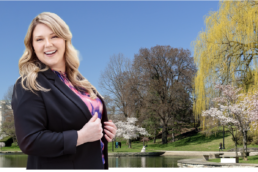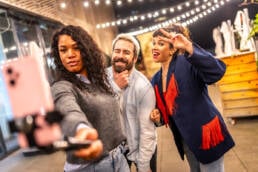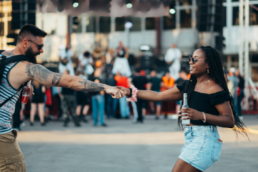CAN YOU HEAR ME NOW?
As we reported in our COVID Cliffs Notes Edition 26, Week 53, “everything audio” is poppin’ off in a big way right now. Across multiple verticals and industries, we see audio play out in interesting ways, so we’re taking a deeper dive look at this trend that’s literally music to our ears.
Did You Know?
- Our hearing is always on. When we sleep, our brain can filter out sounds and respond only when we perceive a threatening noise.
- The University of Newcastle in Australia documented the most unpleasant sounds for humans (TW: just reading the descriptions can literally make your skin crawl), including some neck hair-raisers like an electric drill, a baby crying, chalk on a blackboard, rusty swing chains, a person retching, a knife scraping against a bottle, a fork scratching on a plate, a ruler on a bottle, nails on a blackboard, or our own personal hell; two pieces of Styrofoam rubbing together.
- The vestibular system, responsible for maintaining equilibrium, is in the inner ear. In fact, most cases of vertigo lie within the auditory system.
FUNCTIONALITY OVER FORM
In a laudable, audible effort, those crafty deities of Swedish home décor over at IKEA have dispensed with their ever-popular paper, print catalog, and gone full-blown digital this year. Northern Europeans tend to drive the cutting edge of eco in many aspects of lifestyle, and IKEA should be commended on two fronts for this dramatic pivot:
First, the reduction in paper waste and killed trees is meritorious on multiple levels. We’re more than a fifth of the way through the twenty-first century, and digital means should trump wasteful paper and toxic ink footprints in any and every scenario imaginable. It’s estimated that IKEA will save about 450,000 tons of paper annually by offering a digital-only catalog, and that alone is impressive.
Secondly, the savvy Scandinavians should be applauded for keeping au courant not only with a visual “look book” style virtual catalog (which mirrors the handheld experience) but the global brand is on-trend with a contactless, convenient, hands-free audiobook; chockful of style inspo, auditory tidbits, and vibrant product descriptions. Some have even commented that the cool voiceovers are akin to ASMR sleepy time tactics to quell and calm the brain at bedtime. Give a listen on Spotify, Audiobooks.com, or YouTube.


DROP-IN AUDIO
Bright Brothers Strategy Group sees an increase in audible initiatives everywhere, like the new audio-based social media platform Clubhouse. According to its website, “Clubhouse is a new type of social network based on voice—where people around the world come together to talk, listen and learn from each other in real-time.”
The invite-only entity has risen to prominence due to its purposeful exclusivity (although that may change soon, and iPhone users may download the app and join a waiting list), and celebrity usage by the likes of Drake, Kevin Hart, Ashton Kutcher, Oprah, Chris Rock – and even Facebook founder Mark Zuckerberg. While its seemingly elite member base seems unattainable to us commoners, the New York Times reported that the toney talkers already boasted 600,000 registered users in December 2020 and have been courting influencers.
Vogue magazine gave us a sneak peek, calling the experience “a dizzying bringing together of live podcast-style conversations, panel discussions, networking opportunities (some savvy people are already swapping ‘influencer’ for ‘moderator’) and advantageous multiple-room use (locked and private options are available so you can talk to pals too), the social-media app mimics real-life interactions.”
The first rule of Clubhouse is that the audio itself never leaves the app. Conversations are not recorded or saved. More to follow as this platform matures.
AUDIO KILLED THE DIGITAL STAR
Marketers have been talking about podcasts for well over a decade now, but the lesser-used cousin of visual media platforms like Instagram, Facebook, and Pinterest is seemingly coming into its own, pushed to prominence by, you guessed it; the pandemic.
Since “shelter-in-place” and “safer-at-home” orders virtually decimated the traditional rush-hour commute in many places with mandatory lockdowns, entire populations found themselves with more and varied time on their hands to lend an ear to podcasts.
Some interesting facts:
- A MARU/Matchbox survey conducted in July 2020 showed that since coronavirus hit, 41% of weekly podcast listeners report they are spending more time listening to on-demand audio content. That equates to 4X more than the seven percent who said they are listening less.
- Of those who listen to six or more hours per week — 46% said they are spending more time with podcasts.
- The fastest-growing segments of heavy podcast listeners are women, Millennials aged 18-34, and newer listeners.
- The top reasons weekly podcast listeners tune in to podcasts are to be entertained and to learn.

52% of weekly podcast listeners learn about new podcasts via social media

Among weekly podcast listeners who use social media, 63% follow their favorite podcast hosts on Instagram:

We only know of one district that produced their own podcast (and it’s phenomenal)! The “Hey Baltimore!” podcast was produced by the Downtown Partnership of Baltimore and includes a variety of local guests and astounding insider takes on the city’s vibrant district.
THE SWEET SOUND OF BRAND LIFT
YouTube is taking on Spotify head-to-head (or ear-to-ear, as it were), with 15-second audio ads. During the pandemic, listenership has increased, with as many as 3 million people using YouTube as background playlists. The Google-owned video giant has launched 15-second audio ads that include a static image or simple animation, with a clickable area if the user is paying attention and wants to explore the advertisement to leverage those listeners.
Audio ads are still in beta and available on Google Ads and Display & Video 360 with the same audience-targeting as video campaigns. The audio-only ads include a static image or simple animation that’s clickable if the user wants to explore the advertisement.
YouTube ran tests and found a significant boost in brand awareness for those who participated. Shutterfly, for example, saw a 14% increase in ad recall lift after using YouTube audio ads, and YouTube boasts that 75% of audio ad campaigns saw a significant boost in brand lift.
Plus, the auction-based nature makes the ads a good fit for PMDs that already include Google SEM as part of their paid media tactics. Learn more at https://support.google.com/google-ads/answer/10227746











